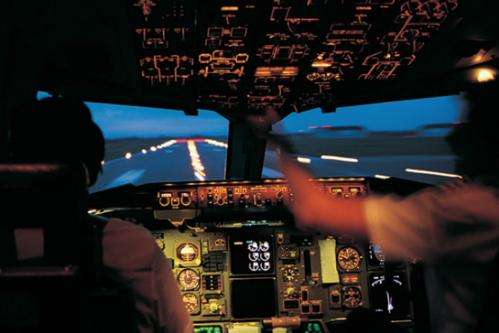New technology to measure radiation exposure in pilots

(Medical Xpress)—Researchers from the University of Wollongong have developed a unique device that measures how much radiation pilots and astronauts are exposed to.
The silicon-based microdosimeter assesses the radiation risk to astronauts and pilots, and radiation damage to microelectronics, during long-term space missions and high altitude flights.
Exposure to too much radiation can cause cancer, damage to the foetuses of pregnant women and genetic defects that can be passed onto future generations.
Professor Anatoly Rozenfeld, Director of the Centre for Medical Radiation Physics (CMRP) – the largest research body of its kind in the Asia Pacific region – has just been granted a US patent for his invention.
"Silicon microdosimetry is providing a new metric for the estimation of hazards from ionizing radiation in mixed radiation fields. It is an essential contribution to radiation protection of pilots and astronauts in avionics and space, where the radiation environment is not easy to predict," Professor Rozenfeld said.
Professor Rozenfeld and his multidisciplinary research team at CMRP have worked with a number of high profile international agencies, such as the National Space Biomedical Research Institute (USA), the United States Naval Academy, the Australian Nuclear Science and Technology Organisation (ANTSO) and the Australian National Fabrication Facility at UNSW, on the invention.
"We are confident that this version of 3D silicon microdosimeter after final investigation of prototype will be very attractive for commercialisation in many fields of terrestrial and space radiation protection," Professor Rozenfeld said.
Professor Rozenfeld, who has dedicated his life to finding better treatments for cancer after losing both parents to the disease, said the technology could also be used in advanced radiation oncology modalities (such as proton and heavy ion therapies) for cancer treatment.
Professor Rozenfeld also recently received a Chinese patent for a skin dosimetry technology that was 10 years in the making.
'Drop-in' accurately measures (in real time) the amount of radiation absorbed into a patient's skin during procedures such as radiotherapy and CT scans that can give off high levels of ionising radiation.
"An accurate skin dose measurement can help prevent a patient's skin from being overdosed, and at the same time, provide a vital indication of overall radiation safety," Professor Rozenfeld said.













